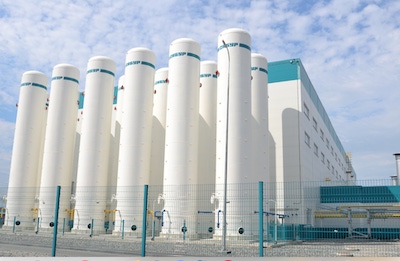The ZapSip-2 project will be fully operational shortly, and produce 20 grades of HDPE, LLDPE and PP.
October 29, 2019

Processors in Europe, China and Turkey stand to benefit from a new source of polyethylene and polypropylene in Russia, as do local converters in the CIS and Russia. The ZapSip-2 project in Tobolsk, Western Siberia, will add HDPE, LLDPE and PP copolymers to the product portfolio of SIBUR, which currently focuses of LDPE and PP homopolymers. Further, unlike many projects in the Middle East based on low-cost feedstock, SIBUR plans to offer a diverse palette of grades from the new production site when onstream next year, with 20 grades in total to be produced.
|
The ZapSip-2 project will elevate Russia’s SIBUR to third position on the polyolefin capacity stakes in Europe. |
Europe is an important market for SIBUR accounting for about 26% of the total PP and PE exports. Of no less importance, China accounts for about 30% of the total PP and PE exports.
With ZapSip-2, we will rise to number three in polyolefins [capacity] in Europe,” says Sergey V. Komyshan, Executive Director and Member of the Management Board at SIBUR. “And if we go ahead with a second major project in Amur, we would become one of the top players,” he notes.
The ZapSip-2 project is currently transitioning from trial to commercial production for PE. PP is already being produced commercially. ZapSip-2 includes 700,000 tonnes/year of HDPE capacity and two 400,000-tonnes/year HDPE/LLDPE swing units, together with 500,000 tonnes/year of PP capacity.
The Amur Gas Chemical Complex, potentially in partnership with Sinopec and close to Russia’s border with China in Svobodny, Eastern Siberia will be just as ambitious, if not more so if it goes ahead. A decision should be made by year-end. Sinopec is considering a 40% stake in the project.
The Amur project will have total capacity of either 1.5 million t/y or 2.3 million t/y of PE. The first option would include two HDPE plants (350 kt/y each) plus two HDPE/LLDPE swing lines (400 kt/y each). The second option would include a another set of swing lines which would increase PE capacity to 2.3 million tons/yr. The second option would also add 400 kt/yr of PP capacity. The majority of production from this complex would be directed to the China market.”
In terms of grades, the bimodal HDPE plants will produce pipe grades, film grades and blow molding grades. These will include HDPE grades HD03594 PE and HD03594 RC with MFI 0.3 for the production of carbon black pipes PE100+ for gas and potable water supply, carbon black PE100+ for large diameter pipes, and carbon black pipes PE100RC with high crack resistance. Further, the bimodal HDPE grade HD03580 SB with MFI 0.3 and density 0.958 is designed for production of up to 30-l containers for storage and transportation of household chemicals and cosmetics.
Further, the HDPE grade HD10530 LB with MFI 10 and density 0.952 has high ESCR and impact strength and is recommended for medium and large blow moulding items of 1-60 L for storage and transportation of aggressive products.
SIBUR will also offer LLDPE grades with MFI of 0.9 and 2 that can be used in production of general purpose blown or cast films, such as agricultural films, stretch films, liner bags, and sacks. The LLDPE grade LL30200 FE with MFI 3.0 will also be offered for cast extrusion of stretch films and coextrusion to produce high quality stretch packaging.
In its PP portfolio, SIBUR includes an impact grade for thin-wall injection-molded packaging and opaque containers for freezing (PP I 482 IM), housewares, toys and furniture (PP I 212 IM), and caps and closures (PP I 122 M). Also on offer are a random copolymer grade for thin-wall packaging (PP R 481 IM) and pressure pipes for drinking and industrial water supply (PP R 003).
About the Author(s)
You May Also Like





